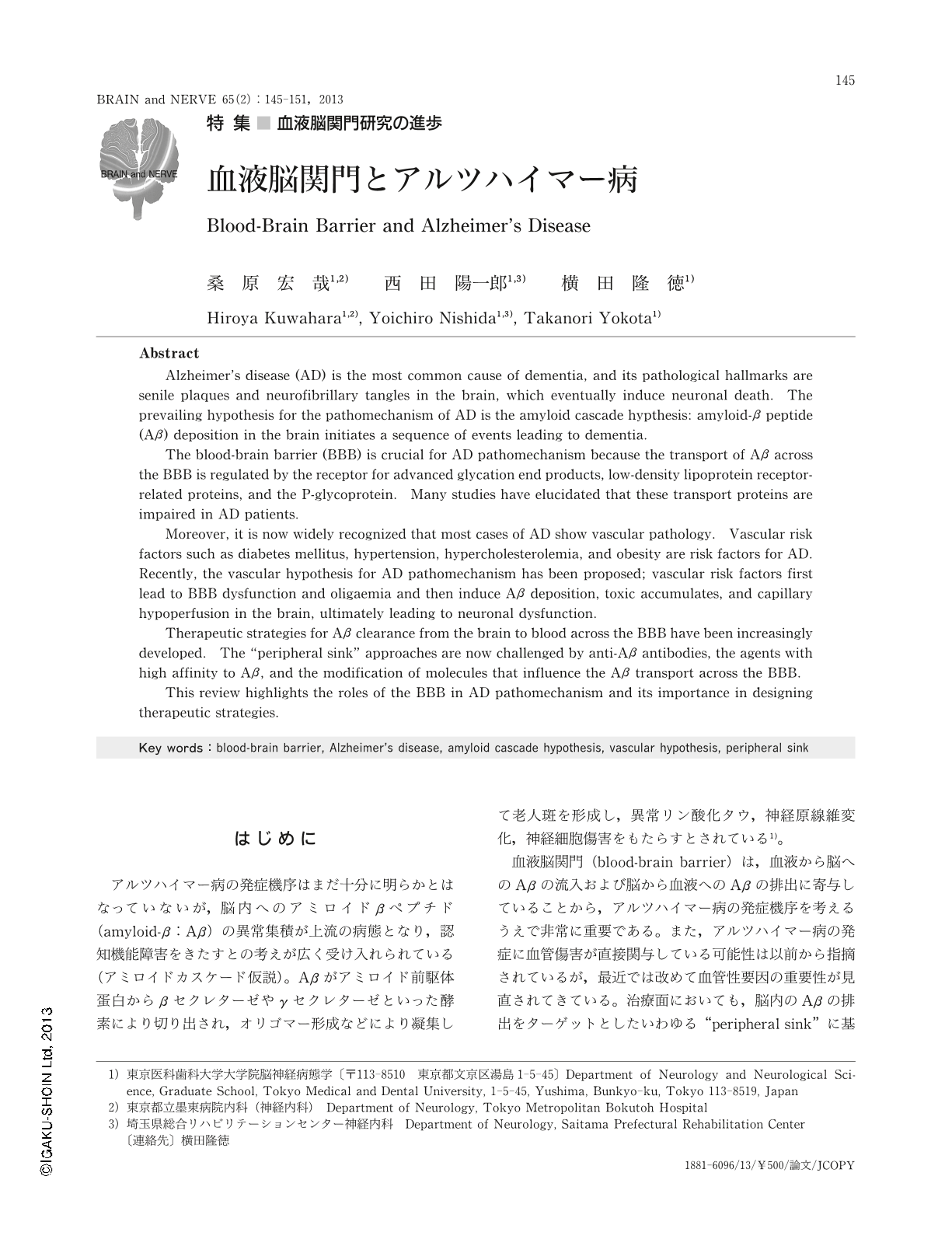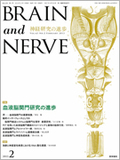Japanese
English
- 有料閲覧
- Abstract 文献概要
- 1ページ目 Look Inside
- 参考文献 Reference
はじめに
アルツハイマー病の発症機序はまだ十分に明らかとはなっていないが,脳内へのアミロイドβペプチド(amyloid-β:Aβ)の異常集積が上流の病態となり,認知機能障害をきたすとの考えが広く受け入れられている(アミロイドカスケード仮説)。Aβがアミロイド前駆体蛋白からβセクレターゼやγセクレターゼといった酵素により切り出され,オリゴマー形成などにより凝集して老人斑を形成し,異常リン酸化タウ,神経原線維変化,神経細胞傷害をもたらすとされている1)。
血液脳関門(blood-brain barrier)は,血液から脳へのAβの流入および脳から血液へのAβの排出に寄与していることから,アルツハイマー病の発症機序を考えるうえで非常に重要である。また,アルツハイマー病の発症に血管傷害が直接関与している可能性は以前から指摘されているが,最近では改めて血管性要因の重要性が見直されてきている。治療面においても,脳内のAβの排出をターゲットとしたいわゆる“peripheral sink”に基づく治療をはじめとして,血液脳関門におけるアルツハイマー病の病態を考慮したさまざまな治療法が開発され,臨床応用が大きく期待されている。
本稿では,アルツハイマー病の病態および治療に関連する血液脳関門の知見について概説する。
Abstract
Alzheimer's disease (AD) is the most common cause of dementia, and its pathological hallmarks are senile plaques and neurofibrillary tangles in the brain, which eventually induce neuronal death. The prevailing hypothesis for the pathomechanism of AD is the amyloid cascade hypthesis: amyloid-β peptide (Aβ) deposition in the brain initiates a sequence of events leading to dementia.
The blood-brain barrier (BBB) is crucial for AD pathomechanism because the transport of Aβ across the BBB is regulated by the receptor for advanced glycation end products, low-density lipoprotein receptor-related proteins, and the P-glycoprotein. Many studies have elucidated that these transport proteins are impaired in AD patients.
Moreover, it is now widely recognized that most cases of AD show vascular pathology. Vascular risk factors such as diabetes mellitus, hypertension, hypercholesterolemia, and obesity are risk factors for AD. Recently, the vascular hypothesis for AD pathomechanism has been proposed; vascular risk factors first lead to BBB dysfunction and oligaemia and then induce Aβ deposition, toxic accumulates, and capillary hypoperfusion in the brain, ultimately leading to neuronal dysfunction.
Therapeutic strategies for Aβ clearance from the brain to blood across the BBB have been increasingly developed. The "peripheral sink" approaches are now challenged by anti-Aβ antibodies, the agents with high affinity to Aβ, and the modification of molecules that influence the Aβ transport across the BBB.
This review highlights the roles of the BBB in AD pathomechanism and its importance in designing therapeutic strategies.

Copyright © 2013, Igaku-Shoin Ltd. All rights reserved.


